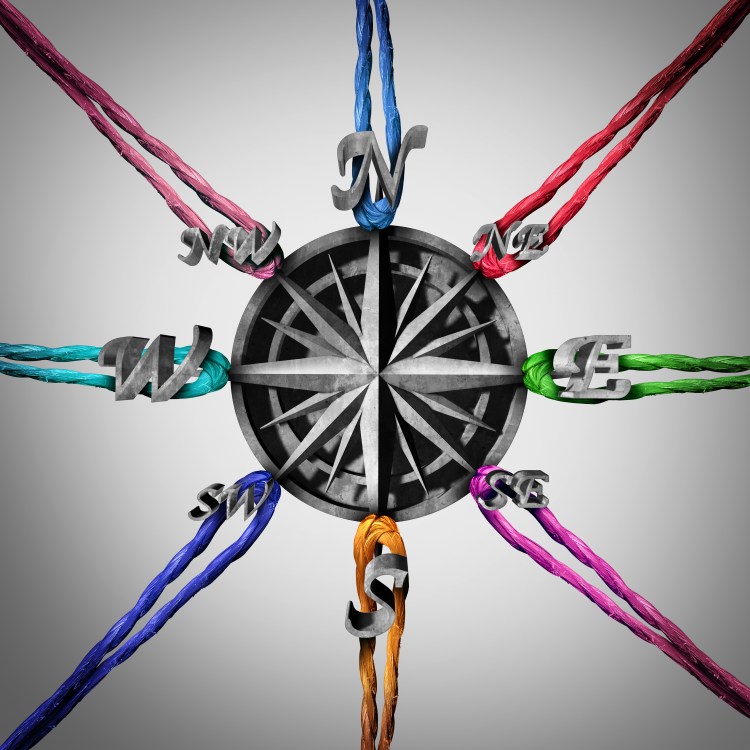With the rapid growth of webcomics in recent years as new hosting giants like WEBTOON continue to attract massive traffic, it’s very tempting to simply dive right into drawing when a spark of inspiration hits for a webcomic idea of your own. No matter what tools you use to create your work, be it a tablet, pen and ink, mixed media, etc, you hit your stride immediately and push out three pages – four – five, and then…
You burn out. You abandon the comic. It’s left forever unfinished on the web, a digital ghost of what could have been. It is joined by thousands of others just like it every year.
And that brings us to one of the greatest challenges a webcomic creator faces – staying with it. Creating an ongoing comic, one that has regularly scheduled updates and an expected level of consistency, is a task that involves mental endurance. It is easy to start with a good idea, but where do you go once you establish the premise of your work? Have you thought about the long-term goals of the story? What about your characters? Have you developed them enough and charted a path for them within your story? Are you telling a long-form story with a definite beginning, middle, and end, or are you creating a comic made up of numerous short stories or gag comics? These are very different types of work, but they both require the same sort of planning and stamina to execute successfully.
Let’s look at some of the most common mistakes creators make and some of the strategies they can employ in order to overcome these common obstacles.
1. I Want to Create More Than One Thing
This is one of the most common problems that occurs for creators. They have not just one idea they’d like to work on, but several. This might lead them to abandon one work to start another, or spread themselves out too thin to try to do multiple projects. Eventually, overextending like that leads to burnout and abandoning the effort entirely.
But if you have more than one good idea, what’s to stop you from combining them into one more developed, richer work? When I started developing one of my favorite comics, Supervillainous, I was going in a very, very different direction. I planned to do a humor comic about a fast-talking superhero that explored his role in a family with a tradition of superheroics. However, the first villain I introduced, The Crimson Claw, ended up feeling like the more intriguing character. The simple gimmick I assigned him in his limited role was that his kids would keep interrupting him while he was in his “villain mode.” He was also working with a contractor to install child-proof death traps. To me, THAT was an intriguing character. That was the guy I wanted to read about.
But I only had the bones of an idea. How would I flesh it out more? I hit my notebook. I had comics about a child genius who built her own robot sidekicks and ran afoul of an international crime syndicate. I had a comic about a man whose brain was accidentally exchanged with a dog’s. I had a comic about a man who had to live with a pair of demons and try to prevent them from destroying the world. I took all of that and used it in Supervillainous to create parts of the main and ancillary cast, and incorporated those premises into storylines. By adding elements in from other concepts, I gave my new project legs, and those legs carried that comic for six and a half years until I ended the storyline at a natural endpoint. All of those other concepts, each very different, were woven together to create a more fleshed-out world for my comic. The number of webcomics that finish telling their story is few and far between, and this is one way to give yourself enough material to get there.
2. I need to commit to a format.
Comics have endless variety and an almost limitless level of creativity. While this is one of the most freeing aspects of working in the medium, it does present some challenges for your potential readers. I have seen brilliant work undone by more “interesting” choices in layouts online. One that stands out was a fairly popular comic that decided to take advantage of the internet’s infinite canvas scrolling ability. Normally, this means creating a comic that runs long vertically. This comic creator chose to take advantage of infinite canvas by forcing the reader to scroll to the side, and scroll, and scroll, and scroll, and scroll…
While this was a one-off, it was jarring as a reader and made it difficult to enjoy the Herculean effort that went into creating the work. This is an extreme example, however, and it’s one that should be avoided. Let’s look at more realistic issues a creator faces.
For one, does a comic strip format or a comic page format best fit the project? This is a decision that should be made before even starting on the art because once you present the first few updates in one format, there will be an expectation from the reader that it will be the format they will see whenever they visit your comic. There is comfort in that to a reader, and it does inspire subsequent rereads and archive dives. Switching formats from strip to page, or vice-versa, is jarring at times, and leads to an inconsistency that can be a turnoff for readers. It also can take away from the quality of the writing. Over the years, I’ve settled on working in a four-panel comic strip format. I’ve found a rhythm in writing with that limitation, and building to the last panel. A creator can have strength in one format over another, and finding a format that allows you to work best is critical. You’re planning on doing this for a while.
3. The Update Schedule
Here we go. This is one of the trickiest decisions a webcomic creator will have to make. How often, and on what days, do you update your comic?
The thing is, there’s no specific correct answer, but there are a number of wrong ones. Those wrong ones have a nasty habit of sneaking up and surprising creators, too. Let’s examine them.
You want to update multiple times a week because your early pages or strips are simply pouring out of you. The workflow is smooth, fast, and it almost feels effortless.
And then real life makes an appearance and smacks you in the mouth. An accident. An illness. A job change. A job loss. A new addition to the family. A loss to the family. There are any number of things that can creep up and surprise you that cause major changes in your very real life.
The harsh reality of creating webcomics is that this will not be your full-time job, and if you are lucky enough that it somehow does become that, it will not happen overnight. It can take years. You have to examine things carefully and ask some tough questions:
- Can you maintain that workplace for weeks, months, or years at a time?
- Can you maintain it if something big or unexpected happens in your life?
- What are your other long-term life goals, and how does that affect your comic production?
An ambitious start might attract a few extra eyes and perhaps even a few fans awestruck at your ability to pump out those pages, but that kind of pace will wear down an artist both mentally and physically. Making comics is a time-consuming process, and you have a life outside of that project. It is okay to plan for that and not update as frequently. That allows you to build up a buffer – the cartoonist’s insurance policy – and maintain a healthy real life. I only update my current comic, Huzzah!, on Mondays, and I have time to work on other art, play the occasional videogame, work on other hobbies, and keep my health. A free tip: cartooning is very sedentary work, and health problems can arise from that. Be sure to get up and move.
The best update schedule is the one that best fits your life. Can you maintain a couple updates a week? There you go – that’s your schedule. Can you only do once a week? That’s fine, too. If people enjoy the comic, they’ll wait, and they’ll keep coming back.
4. Promoting Your Work is a Thing You Should Do
You’re a new creator, or you’re even an experienced creator who’s launched a new project, and you want readers. You NEED readers. You look at those view counts and the number of comments and you need more.
But it sure is hard to go get them when there’s so much other work to do, isn’t there? You’re writing, drawing, coloring, lettering, writing blog posts, and possibly even connecting with a creative partner. Who’s got the time for self-promotion?
It’s not as hard as it seems. Some of the old ways, like placing an ad, simply don’t work anymore because everyone uses ad-blockers now. Webcomic link exchanges aren’t really a thing anymore, either. There are only a few webcomic collectives now. RSS feeds have fallen out of favor. You look at Webtoons and their front page highlighted comics with envious eyes. How can you compete? How can you build up to what they have?
Aside from a high-quality comic that immediately catches readers’ eyes, nowadays, the best way to build an audience is to engage with an audience. Have a social media presence. Share your work. Get it out there to get more eyes on it. The sad thing is, there is no sure way to build that audience. You can attract people to check out your work, but they have to connect with it and like it or they won’t return. In time, that audience will build itself. It still takes your time to do that.
And you want to keep that audience. That is on you, the creator. Take the best ideas you have and don’t be afraid to slap them together to create something bigger and better. It births even more inspiration. Plan for the long haul. Know your limits and don’t be afraid to embrace them. Good work is good work and good work brings readers.





